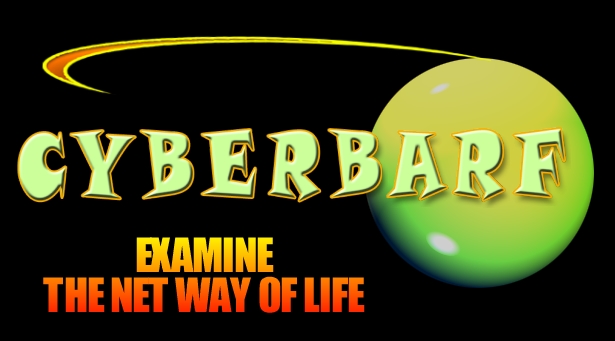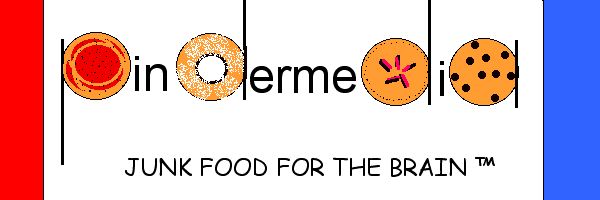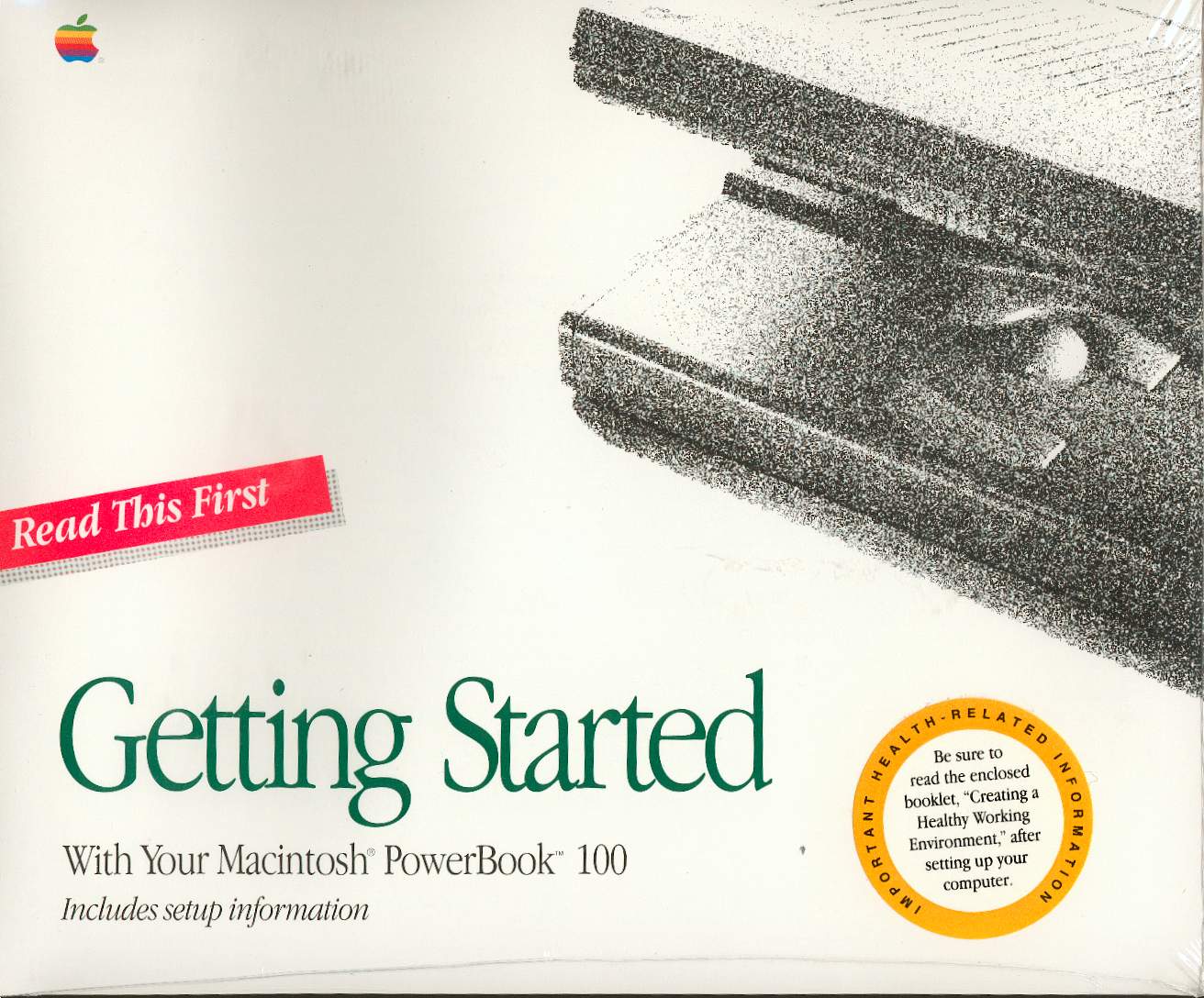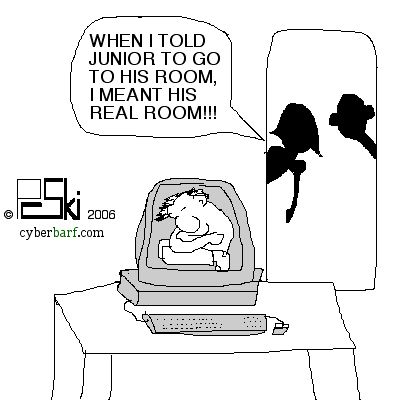|
IN THIS ISSUE: Windows Vista Start Up Screens iPod, Therefore iAm iToon on Hanging Chad Edgy Cation Apple at 30 iToon on Junior's Room THE NEW WORLD
LOST and Found III |
BUY COOL BEACHWEAR!! PERFECT FOR SPRING BREAK!!
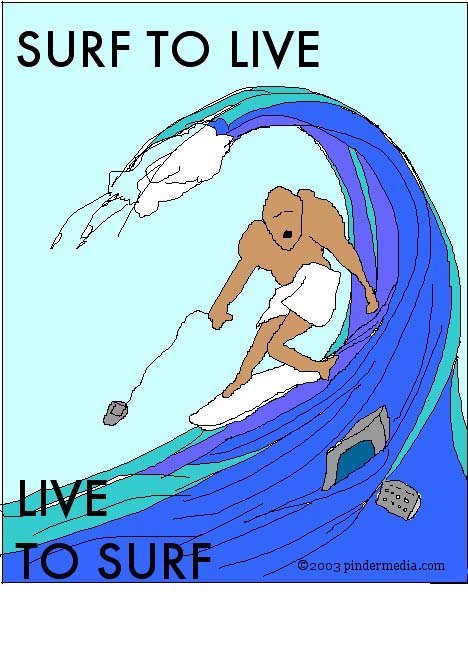 |
Windows Vista Start Up Screens
This is the new header graphic for descendingspiral.com. This lead to a Redmond reader to have a negative rating on it, which in turn lead the artist to conclude that the horse may be a Microserf and Bill may be portrayed as God on campus.
This was at the time that Microsoft announced another delay in launching its new operating system, Vista. It is about five years over due at this point in time. Because of the endless delays, we want to make sure that the Redmond crew do not forget the important start-up screen for their new operating system boot. So, here are some other suggested start up screens.
Always a favorite: playing checkers in hell with Saddam.
What snake in the grass?
Do vampire bats call Washington State home?
This one is for the international disks; this is what countries like France think is America.
By the time Vista is released, the Abacus could be the computing model of choice.
And this one is the artist's personal favorite. It sums up the situation to a tee.
cyberbarf
EXAMINE THE NET WAY OF LIFE
iPod,
Therefore, iAm
If an iPod fell out of that tree instead of an Apple, would Issac Newton have invented Dolby stereo instead?
iPod,
Therefore, iAm
NEW T-SHIRT AT THE CYBERBARF STORE!
Don't forget to check out the
CYBERBARF BARF BAG podcast.
iToon

Edgy Cation
In local elections, most school referendums were defeated by the voters. Americans spend more and more money each each funding elementary and secondary public education. The early 20th Century blueprint was that an education is the path for success and the American Dream. Now, in the 21st Century, the voting tide may be changing against funding the endless sink hole called public education.
The urban schools have been failing its students and taxpayers for decades. The rural schools have lost the population base in order to survive. Many cities have thrown school boards out on their heels in order to salvage the system and the federal educational dollars that are required to balance the budgets. States have bet their citizens own futures on lottery sales geared toward funding the skyrocketing costs of education; but that is taking more dollars from the same tax base. People are getting wise to the endless demand for more educational funds, but with no tangible proof that the students will have the American Dream because of their diplomas.
The headlines in the business section constantly blare about middle management lay-offs. Thousands of highly educated, well trained, professionals are laid off on a regular basis. Corporate America is not retaining its educated managers because it has found alternatives to a local staff; outsourcing both production and management overseas is becoming a real thorn in the sides of workers. Recent college graduates, in debt in the tens of thousands of dollars, are not only competing against thousands of classmates for entry level jobs, but also with their displaced parents. The alternative is the largest growing segment of the economy: the minimum wage growth industry of fast food.
Do you often wonder why there are so many strip centers in your community. They seem to run together like an endless stream. One factor is that when corporations displace hundreds of workers, some need to find a job to get a steady paycheck after the severance or unemployment runs out. The only way to meet the mortgage payment is to tap the savings, retirement or family members to get enough startup cash to open a franchise business. Most of these displaced manager franchisees find the hours long, and the end of the year profits lean. It turns into another de facto minimum wage job with ownership.
None of the new era minimum wage jobs, occupations, or the Big Box retail clerkships require a diploma. The cruel fact of life is that the sector of highly educated workers is shrinking while the sector of unskilled or semi-skilled workers is expanding. Coupled with the fact that good paying factory jobs are not secure, no place in the land is immune from sudden and fierce economic downturns.
The government continues to state that the economy is good; it is growing. But like President Clinton proclaiming during his administration low unemployment and job growth, the reality was that many people were working two part time jobs in order to get to the next week. A nation that is turning into a service economy will have a lower overall standard of living because it was the industrial base was where the value added components to the production-distribution-sales process. The average worker cannot be in the same position years ago when oil was $20/barrel when oil is now $60/barrel. Real wages have not tripled in the past decade.
What has kept the economy afloat has not been the bedrock education system, but cheap interest rates and people who found that they could print their own money. Cheap interest rates, and loose credit has kept the American consumer consuming to record debt loads. This is a cultural change only two generations removed; grandparents saved then bought items for cash, their grandchildren now charge first pay later mentality. Grandparents had to fill out loan applications to secure oil credit cards; now, credit card issuers cold call-send cards to college students to get them addicted to easy credit terms. Studies have shown that buying habits of adults are formed in a person's teens. A high school graduate without student loan debts is a better credit risk than a college grad with unpaid student loans.
But don't tell that to the educators. They still stress the fact education is the only way to prosperity. The sell this theme constantly. Why? Because it protects their own jobs. Teachers with tenure fear merit testing. They like the old system because it benefits them.
During the campaigns for more taxes for education, very few people have the nerve to ask the boards why they need more money. Can't you cut expenses first? The answer at times is that the district need to upgrade its facilities to provide new programs, like computer labs, so your children do not fall behind other districts. Keeping up with the vague unknown Jones is a powerful marketing tool. School boards have gotten clever with their referendums. They sometimes break the proposition into two parts. First, a bond issue to build new schools; then second, a property tax increase to fund the facilities. But when the bond passes, but the property tax increase fails, the Board is stuck building a school with no money to open it. Now, how does not help the district's students?
So what is a person to do in this changing economy. According to pop culture, the way to succeed is to go on reality television. Hitting the lottery and instant retirement is the best game in town. People are flocking to Vegas to become professional poker players because they see average Joes on television winning hundreds of thousands of dollars. This is pro-athlete illusion on a grand scale. Every athlete thinks they are good enough to go pro; but less than one-half of one percent have any change to have a professional career. The illusion of fame and wealth clouds a person's real abilities. The lack of focus toward a real career path stunts or kills a person's ability to have a fall-back position. Scratch off lottery tickets at the local liquor store is not a real fallback position.
The hard, unanswered question is what is the purpose of the current education system?
In 1900, at the dawn of the industrial revolution, the education system was the training ground to mold people into factory and office jobs. America was founded upon an agricultural economy. The economy of a self-sufficient farmer changed when factories began making machinery and tools. New industries developed that needed workers who could understand the basis of modern machinery. Secondary and college education courses would transition the children of farmers into industrial workers. The basic educational system of reading, writing and English was also used to assimilate new immigrants into a common American culture.
By 2000, the education system has fragmented into bipolar segments. The basics have been splintered into bilingual, culturally diverse studies, and social engineering of opinions rather than the simple truths of reading, writing and mathematics. Education used to be the exclusive domain of local school boards and funded by the will of the local population. This lead to some school districts having more support than other districts because parents and voters made that choice. Today, education funding gets passed around like a three-card monte game between federal, state and local dollars. One cannot calculate the amount of waste per dollar “spent” on education.
What is the purpose of the current education system? It claims to be the path to finding a steady, well paying job. For some, but not all. In the past decade, there has been a groundswell of new immigration, legal and illegal. There may be more than 30 million illegal workers in the United States. No one knows for sure. Massive protests have been media-hyped on the plight of “illegal” workers. There is an intellectual disconnect in these protesters: an illegal immigrant by definition is not supposed to be in this country in the first place. But, they supporters claim, these illegals are needed because they do jobs no American wants to do. If there was such a massive need for lower than minimum wage, manual laborers, then the government would expand the “legal” work visas to accommodate the demands of the business community. The U.S. has plenty of unemployed and underemployed citizens who could work these jobs. So what is holding them back? Generations of institutionalized welfare. It would take a job paying approximately $44,000 to get a mother with three children off welfare. People are not dumb; if the government will give you a check for not working, what is the incentive to work? The cause and effect is that the shrinking middle class is getting squeezed from both ends of the economic spectrum. There once secure jobs, pensions and health care benefits can be erased in a flash in a Bankruptcy filing; but their taxes to support the underclasses and illegal workers keeps growing. If the middle class is displaced, many are over qualified for the positions they seek in the transitional workplace. People laid off without jobs for years is not uncommon. Was their education the societal safety net? No.
Tiger Woods recently opened up an after-regular school and summer school program in California. He asked students what types of things they would like to study. Robotics, science, and the arts. Programs that are too expensive or cut from their normal school curriculum. Students get hands on experience with concepts that interest them. It is a project that Woods believes can handle 5,000 students a year, picked from various public schools in the area. This is a form of supplemental education. If students are the schools' “customers,” why do schools fail to deliver what the students want to study?
School boards have not defined what the future will hold for their students. The dynamics of industry has changed so much in the past 100 years, schools have failed to adapt to the times. During the first Internet boom of the 1990s, several school districts tried to ban their students from working during the summer as computer programmers, because they would be making so much money that they would not return to school in the fall. A talented child should have their talents nourished in the best way possible. Giving a child a copy of Photoshop and access to a digital camera to master may be more beneficial as a job skill than a liberal arts degree. Computer graphics are imbedded in a growing number of applications, from advertising commercials, broadcasting, video gaming, movies, and product design. A school district that realizes that it needs to train its students for the existing real world jobs in growth industries will be meeting the mission of getting their graduates the chance to succeed in the job market.
Apple at 30
The still sealed Start Up manual for Apple's Powerbook 100 from the Chez Pablo library shelf. Note the attractive seal that pleads “Be sure to read the enclosed booklet 'Creating a Healthy Working Environment' after setting up your computer.”
One of the hardcore rebel Mac users principles is that you don't read the owner's manual. Take your new Mac out of the box; plug it in, and explore its new features. Apple created the user-friendly concept of Plug and Play for technology. The average user has no idea how complex a computer is; what is processing under its shell; or how it creates images on the screen. But most people have no idea how a telephone works either; but we are so used to the utilitarian ease of its use it takes nothing to use it. We use the example of the unsealed Start Up manual as a testament to the forward thinking founders of Apple is getting their technology to the masses.
There was no personal computer revolution when Steve Jobs and Steve Wozniak founded Apple on April 1, 1976. They were looking to improve on the geeky hobby of home brewed computer boxes. Business offices were using the standard of communication: the electric typewriter with carbon paper to make additional copies of correspondence. The work horse was the kettle black metal IBM Selectric, which weighed as much as a Buick sedan, that would slap spinning metal type imprints with ease. Typists were in great demand. Schools taught typing. Typing 100 words per minute was a gold standard of achievement. (Today, no one thinks in the terms of typing words per minute.)
The true watershed event was in 1979 when Jobs visited the Xerox PARC center in Palo Alto, California. Xerox was the leading copier company. It has its pulse on the major business corporations. Lease copiers and make money off the toner and developer consumables. It was a simple and profitable business plan. But executives did have the vision to have a research and development center to speculate on how the work place would change in the future. If one could predict the future, the company could be the first in line to profit from the change. So the engineers assigned to this center began toying with the early computers, networks, and printing technology. When Jobs saw the prototypes of GUI computer screens, data input through a mouse, and small personal printers integrated all fitting on a single desktop, he was inspired that he took those ideas back to Apple. At this time, Xerox was poised on the threshold of controlling the entire computer technology revolution. But it dropped the ball when no one could figure out how these new things would increase copier sales. The PARC components disbursed to seed what is now Silicon Valley.
The business community adopting computer technology was slow. Typewriters were cheap and easy to use. It took major companies to reshape the perception of technology. IBM introduced its first PC in 1981, which put the more expensive Apple machines into second tier position for which the company would never regain its early personal computer market shares. Apple probably would have become a trivial footnote in the lores of computer history if not for the 1984 Super Bowl ad which introduced the Macintosh computer to the world. People saw it as an all-in-one solution. Apple started as a hardware kit company, to a software driven GUI interface demanding company, to an integrated hardware-software company. It closely guarded its proprietary technology while IBM and Microsoft cloned the windows interface into the business standard of today.
What saved Apple from the landfill of time was the rise of desktop publishing in 1986-1987. Creative professionals found the Apple products easier to use to create computer graphics, page lay-outs, color cuts and work flow integration. Soon, one did not have to go to the local printer or copy shop to set up, lay-out and run off pamphlets, church bulletins or newsletters. The power of the printing press was now contained in a Macintosh system. This was the beginning of the appeal of individual users taking control of their own creative work product. There is a childlike gratification of creating something with your own mind and hands. The Apple experience reinforced this stimulation.
Apple survived its own product stumbles, management soap operas and the brute force of the Windows operating environment churning out clone after clone to the masses. The crossroads occurred when the consumer found that both systems looked the same, but the nod went to the Wintel machine because everyone else was using it. Even though the Mac platform was more stable, and did things better, it found itself having to re-invent itself time and time again. With each crisis, Apple came back with innovative, award winning design, new products that made tech geeks giggle with envy, and spawned ancillary new industries to the dismay of their critics (example, the iPod music player and the iTunes Music Store; neither were thought to do anything.)
Mac purists always held true to the spirit of the original Apple faithful. We were different. We remain defiantly different. Many were dismayed when Apple announced that it was changing platform chips to the new Intel processors. The PowerPC, the heart of the company since 1991, was being replaced by something from the enemy Windows camp. The last hurrah for the purists would be to have a new Dual Core Mac boot an off-the shelf Windows OS, thereby in theory slaying the Redmond dragon. But that remains a dream, like the dream that started 30 years ago in California with the two Steves.
iToon
